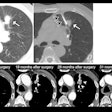Dear AuntMinnie Member,
The health system run by the U.S. Department of Veterans Affairs (VA) has been plagued for the past several years by delays in imaging services -- some of which have made headlines around the country. The publication of a new report this past week offers some insight into the reason for the delays.
In a massive review of hundreds of thousands of orders for imaging exams, the VA's Office of the Inspector General analyzed just how often imaging studies were meeting the VA's standards for timely turnaround. And the report offered good news and bad news.
On the positive side, investigators found that the vast majority of orders for imaging services were completed in a timely fashion. But on the negative side, that still means that many exams -- in fact, 115,000 requests -- were not performed within VA guidelines.
Why were the delays occurring? Investigators found that a major contributing factor was shortages among scheduling staff, at least partly related to salary disparities between what VA personnel were being paid and what they could make in the private sector. In fact, they found that radiology schedulers weren't even being paid as much as schedulers in other medical service areas of the VA.
These discrepancies must be addressed in order for VA patients to receive the care they were promised as part of their service to the country. Hopefully, the report's conclusions will be enough to spur additional investment in a healthcare network that is vital to fulfilling our nation's commitments to its veterans. Find out more in the Imaging Leaders Community.
CTA overuse?
Is CT angiography (CTA) being overused as a first-line exam for carotid artery stenosis? That's the suggestion of a study by researchers from Johns Hopkins Hospital that was presented at RSNA 2019.
They found that from 2011 to 2016 there was a shift from Doppler ultrasound to CTA for diagnosing carotid stenosis -- despite guidelines that recommend using ultrasound as a first-line tool.
In other CT-related news from RSNA, a group of researchers from Massachusetts General Hospital discussed their analysis of patient informational content on the websites of programs performing CT lung cancer screening. Much of the content was found wanting.
Get more stories like this in our CT Community.
Digital mammo's edge
Finally, it may seem like the debate over digital versus analog mammography is one that was resolved years ago, but a group from South Korea gave it one more shot in a massive review of mammograms acquired in 8 million women.
The researchers found that full-field digital mammography had sharply higher sensitivity for breast cancer detection compared with either film-screen mammography or computed radiography-based mammography. The edge carried over to younger women and those with extremely dense breast tissue.
While you're in our Women's Imaging Community, be sure to read our coverage of this week's San Antonio Breast Cancer Symposium, including an article on how women with government-based insurance have higher death rates from breast cancer, and a protocol for ruling out the need for follow-up surgery in women treated with chemotherapy.



















